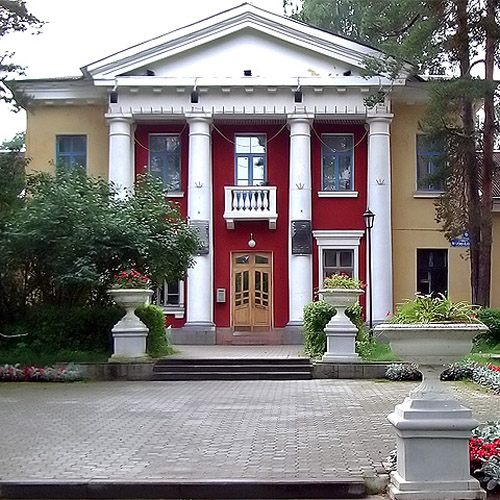Dubnium
105
Db
Gruppe
5
Periode
7
Block
d
Protonen
Elektronen
Neutronen
105
105
157
Generelle Eigenschaften
Ordnungszahl
105
Atommasse
[268]
Massenzahl
262
Kategorie
Übergangsmetalle
Farbe
n/a
Radioaktiv
Ja
Named after the Russian town of Dubna
Kristallstruktur
n/a
Geschichte
Dubnium was reportedly first discovered in 1968 at the Joint Institute for Nuclear Research at Dubna.
Researchers there bombarded an americium-243 target with neon-22 ions.
In the same year, a team led by Albert Ghiorso working at the University of California, Berkeley conclusively synthesized the element by bombarding a californium-249 target with nitrogen-15 ions.
Researchers there bombarded an americium-243 target with neon-22 ions.
In the same year, a team led by Albert Ghiorso working at the University of California, Berkeley conclusively synthesized the element by bombarding a californium-249 target with nitrogen-15 ions.
Elektronen pro Schale
2, 8, 18, 32, 32, 11, 2
Elektronenkonfiguration
[Rn] 5f14 6d3 7s2
The Berkeley team proposed the name hahnium for the element
Physikalische Eigenschaften
Aggregatzustand
Fest
Dichte
39 g/cm3
Schmelzpunkt
-
Siedepunkt
-
Schmelzwärme
n/a
Verdampfungswärme
n/a
Spezifische Wärmekapazität
-
Häufigkeit in der Erdkruste
n/a
Häufigkeit im Universum
n/a

Danksagungen für Bilder: Wikimedia Commons (Hrustov)
The element is named after after the Russian town of Dubna, the location of the Joint Institute for Nuclear Research
CAS-Nummer
53850-35-4
PubChem CID-Nummer
n/a
Atomeigenschaften
Atomradius
-
Kovalenter Radius
149 pm
Elektronegativität
-
Ionisierungsenergie
-
Molares Volumen
-
Wärmeleitfähigkeit
0,58 W/cm·K
Oxidationszustände
5
Anwendung
Dubnium is used for scientific research purposes only.
Dubnium is harmful due to its radioactivity
Isotope
Stabile Isotope
-Instabile Isotope
255Db, 256Db, 257Db, 258Db, 259Db, 260Db, 261Db, 262Db, 263Db, 264Db, 265Db, 266Db, 267Db, 268Db, 269Db, 270Db